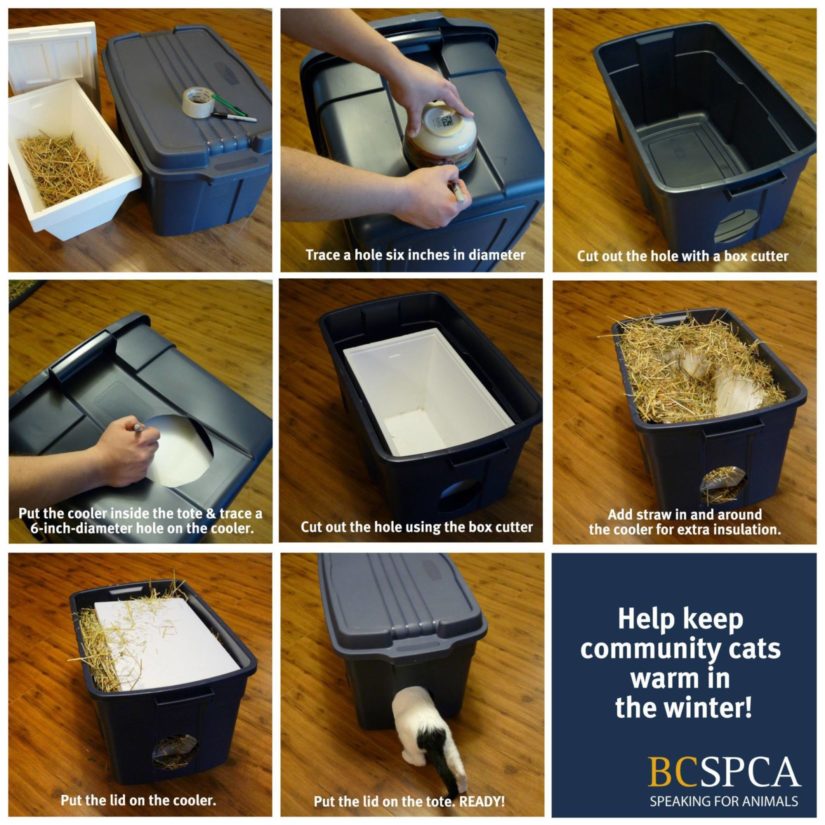That old tomcat you may hear or see prowling around could need a helping paw, errr hand, this winter.

And with temperatures about to drop over the next few days, the BC SPCA released timely information this week on how to help feral cats stay warm.
“There are many feral cats in B.C. communities that have been born and raised in the wild and have never been socialized to live indoors,” said the SPCA.
“Whenever possible, we look to trap, spay/neuter and re-home community cats and recommend that pet cats be kept indoors for their own health and safety.
“Stray and community cats, however, feel at home outside and would not do well in a shelter or home environment. They require specialized support, as they face many hazards outdoors.”
One of those hazards is finding a warm place to shelter, with the SPCA noting a cat’s ears and toes can easily get frostbitten.
Building a shelter out of a large storage container, a styrofoam cooler or sheets and straw is one way to help them.
One website, Neighbourhoodcats.org, says DIY winter shelters share three important aspects: they’re well insulated, have minimal air space and are waterproof.
“They need to be well insulated to trap the cats’ body heat, have minimal air space so there isn’t too much empty room to heat up, and be waterproof so the interior remains dry,” said the website.
When it comes to food, the SPCA says use dry kibble placed in ceramic or plastic dishes. For water, check it twice daily to ensure it stays ice-free.
“The dishes should be placed near but not inside shelters in case they get spilled,” said the SPCA. “Damp bedding just makes it colder for cats.”
Also, motorists should tap the hood of their vehicle and check between the tires to ensure a cat isn’t hiding there or using it as a warm refuge.

There’s also trap-and-neuter, which the SPCA says can improve the health and well-being of each cat within a colony.
The SPCA says if you decide to take this route, contact them for advice.
“Tens of thousands of cats and kittens live outdoors in B.C., suffering from illness, injuries, starvation, frostbite and predator attacks,” said the SPCA.
“Using the (trap-neuter-return) method is just one of the ways the B.C. SPCA is working to help tackle the cat overpopulation crisis.”

- Budget 2024 failed to spark ‘political reboot’ for Liberals, polling suggests
- Train goes up in flames while rolling through London, Ont. Here’s what we know
- Peel police chief met Sri Lankan officer a court says ‘participated’ in torture
- Wrong remains sent to ‘exhausted’ Canadian family after death on Cuba vacation





Comments